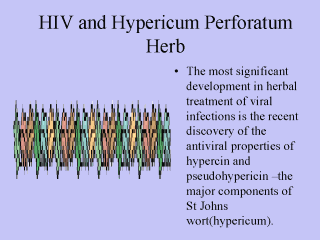| front |1 |2 |3 |4 |5 |6 |7 |8 |9 |10 |11 |12 |13 |14 |15 |16 |17 |18 |19 |20 |21 |22 |23 |24 |25 |26 |review |
 |
Considerable
interest was generated in 1988 after the publication of study which demonstrated that
hypericin and pseudohypericin have noted activity against retroviruses. Retroviruses were
relatively obscure group of animal viruses until the discovery last decade that the
retrovirus HIV (Human Immunodeficiency Virus) was responsible for causing AIDS (acquired
immunodeficiency syndrome). Several pharmacological studies have since been published and
clinical trials using hypericin or herb Hypericum have begun. The salient points of the studies published to date are as follows: *Hypericin has significantly stronger antiretroviral activity than pseudohypericin. *Their mode of action on retroviruses is not understood: but it appears they inactivate mouse and human retroviruses, including HIV3. *They interfere with the assembly or processing of viral components by an infected cell, significantly decreasing the production of mature viral particles, but without directly inhibiting viral proteins. Such combination of activities appears to be unique and contrasts with currently used antiviretroviral agents such as AZT (azidothymidine) with directly inhibit viral proteins. *Their antiretroviral activity was superior to AZT in an animal model, because the toxicity of AZT limited the dosage which could be used. *Their antiretroviral activity was synergistic with AZT in an animal model. *They prolonged the survival of animals infected with retrovirus if adminstered with or after infection. *In slow retroviral animal models administration of hypericin or pseudohypericin 2 weeks or more after virus inoculation significantly ameliorated the resultant infection. *Both compounds appear to have very low in vitro or in vivo toxicity. *Hypericin and pseudohypericin specifically inhibited PKC (protein kinase C) with hypericin having stronger activity. This suggest that inhibition of PKC, which plays an important role in signal transduction in the cell, may be related to the antiviral effect. |
| front |1 |2 |3 |4 |5 |6 |7 |8 |9 |10 |11 |12 |13 |14 |15 |16 |17 |18 |19 |20 |21 |22 |23 |24 |25 |26 |review |